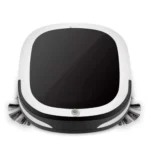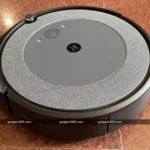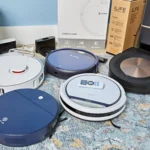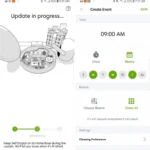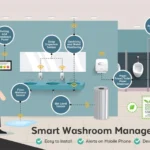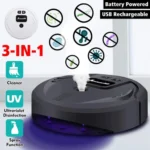As technology progresses, so does the way we clean our homes. One of the latest innovations in the cleaning industry is the robot vacuum cleaner, which has become increasingly popular in recent years. These little machines are designed to make our lives easier by taking care of the tedious task of vacuuming. But how can we maximize their cleaning coverage to ensure that every inch of our homes is cleaned thoroughly? In this article, we’ll explore the benefits of maximizing cleaning coverage with robot vacuum cleaners and the technology and tips that can help achieve it. So let’s dive in and discover how to keep our homes clean with the help of these efficient gadgets.
Why maximize cleaning coverage is important
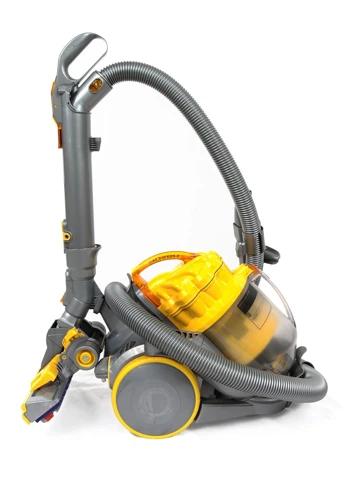
Keeping your living space clean is an essential part of maintaining a healthy lifestyle. As our lives become increasingly busy, finding time to do chores can be a challenge, which is why many people are turning to robot vacuum cleaners. These nifty devices allow for efficient cleaning, freeing up time for other important tasks. But, the benefits go beyond just efficiency and time-saving. Maximizing the cleaning coverage of robot vacuums can improve indoor air quality, remove allergens effectively, and contribute to a healthier lifestyle. In this article, we’ll explore why maximizing coverage is essential and how robot vacuum cleaners can help you achieve it.
Improves indoor air quality
Maintaining good indoor air quality is crucial for a healthy home. Airborne allergens, dust, and dirt particles can cause respiratory illnesses and trigger allergies, especially for people with sensitivities or allergies. Routine cleaning of floors and surfaces is essential to keep the air clean and reduce the risk of health problems. Here is how robot vacuum cleaners can help improve indoor air quality:
- HEPA filters: Most robot vacuums come equipped with High-Efficiency Particulate Air (HEPA) filters, which can trap 99.97% of airborne particles as small as 0.3 microns in size. These filters effectively capture dust mites, pollen, pet dander, and other allergens from the air, ensuring that you breathe in clean air.
- Efficient cleaning: Robot vacuums can clean floors more efficiently than traditional vacuums. They use advanced mapping technologies that allow them to navigate through your home and cover every corner and crevice. This thorough cleaning ensures that there is no accumulated dust or dirt left behind, which can improve the overall air quality of your home.
- Noise pollution: Robot vacuums are generally quieter than traditional vacuums, which can further help in improving air quality. Traditional vacuums can stir up dust and particles into the air, causing them to circulate around the room. Robot vacuums, on the other hand, quietly go about their work, causing less disturbance and less air circulation.
Using a robot vacuum cleaner in your home can significantly improve the indoor air quality by reducing the amount of dust and airborne allergens caused by poor cleaning habits. Robot vacuums can help reduce the risk of health problems by ensuring that your home’s air is fresh and free from harmful pollutants. To learn more about the benefits of robot vacuums, check out our article on why robot vacuums are worth it.
Removes allergens effectively
Removes allergens effectively
One of the greatest benefits of using robot vacuum cleaners is their ability to remove allergens effectively. Traditional vacuum cleaners stir up dust particles and allergens that can lead to respiratory problems, especially for people with asthma or allergies. Robot vacuums, on the other hand, use advanced technologies such as HEPA filters to trap microscopic allergens and pet dander, ensuring they aren’t released back into the air. HEPA filter captures up to 99.97% of particles as small as 0.3 microns, making robot vacuums a popular choice for allergy sufferers.
In addition to HEPA filters, some robot vacuum cleaners also come equipped with UV-C sterilization technology. Harmful bacteria, viruses, and other pathogens can also trigger allergies and respiratory issues. Using UV disinfection technology can help eliminate these allergens and ensure your home is thoroughly cleaned.
Robot vacuums are also efficient at removing pet hair and dander. These allergens can be particularly difficult to remove from fabrics and carpets, but with the assistance of a robot vacuum cleaner, pet owners can maintain a clean and allergen-free environment for themselves and their furry friends.
- Robot vacuum cleaners use HEPA filters to trap allergens and dust particles, ensuring they are not released back into the air.
- UV disinfection technology can help eliminate harmful bacteria and viruses that can trigger allergies and respiratory problems.
- Robot vacuums are also efficient at removing pet hair and dander, making it easier for pet owners to maintain a clean and allergen-free environment.
With the ability to remove allergens effectively, robot vacuums make a great investment for anyone looking to maintain a clean and healthy home.
If you want to read more about how robot vacuum cleaners can save time and make your cleaning routine easier, check out our article on the efficiency and time-saving benefits of robot vacuums.
How robot vacuum cleaners maximize cleaning coverage
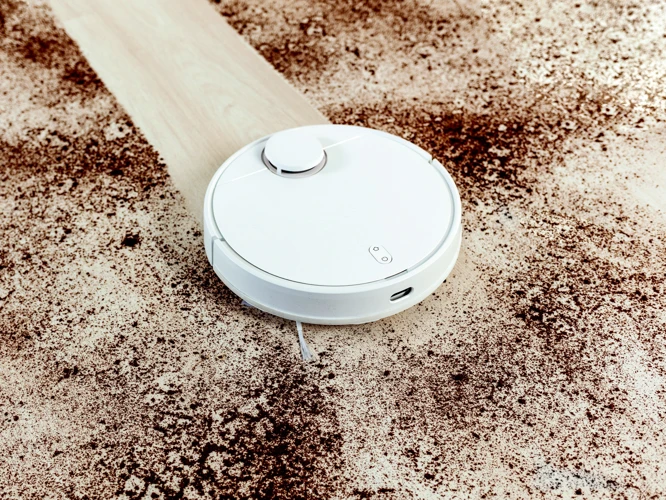
When it comes to maximizing cleaning coverage, robot vacuum cleaners operate differently from traditional vacuums. These high-tech devices use advanced technologies to clean floors quickly and efficiently. They deliver consistent cleaning results that are difficult to match with a traditional vacuum. In this section, we’ll take a closer look at how robot vacuum cleaners maxmize cleaning coverage and the benefits of using them over traditional vacuums. From advanced mapping technologies to multilevel cleaning modes, obstacle detection sensors, and smart navigation systems – we’ll explore all the ways that robot vacuum cleaners effectively clean your floors.
Advanced mapping technologies
One of the key features that sets robot vacuum cleaners apart from traditional vacuum cleaners is their advanced mapping technologies. These technologies allow robot vacuum cleaners to map out the layout of a room, assess the size and shape of the space, and navigate around obstacles to ensure complete cleaning coverage.
SLAM (Simultaneous Localization and Mapping) technology is commonly used in modern robot vacuum cleaners. This technology uses a combination of sensors, lasers, and cameras to create a 3D map of the room. The device can then use this map to determine its location within the room and plan the most efficient cleaning path.
Another mapping technology used in robot vacuums is called VSLAM (Visual Simultaneous Localization and Mapping). VSLAM relies solely on visual information from the device’s onboard camera to map out the room and navigate obstacles.
These advanced mapping technologies allow robot vacuum cleaners to clean with precision, even in hard-to-reach areas such as under furniture and along baseboards.
In addition to mapping technologies, many robot vacuum cleaners also come equipped with HEPA (High-Efficiency Particulate Air) filters, which can help to improve indoor air quality by trapping allergens and dust particles. Some robot vacuums even have the ability to detect and remove pollutants such as pet dander and pollen.
The advanced mapping technologies used in robot vacuum cleaners offer a number of advantages over traditional vacuum cleaners. They allow for more efficient and thorough cleaning, reduce noise pollution, and contribute to improved indoor air quality.
If you want to learn more about the differences between robot and traditional vacuum cleaners, check out our article on robot vs. traditional vacuum costs.
Multilevel cleaning modes
Multilevel cleaning modes are effective features of robot vacuum cleaners that provide a more thorough cleaning than traditional vacuum cleaners. These cleaning modes allow the robot vacuum cleaner to adjust its cleaning approach to different surfaces, ensuring optimal cleaning coverage throughout your home.
A robot vacuum cleaner with multilevel cleaning modes typically has several options that can be customized to your home’s cleaning needs. For example, some robot vacuums have a quiet mode for cleaning while people are sleeping or working from home. Additionally, some robot vacuums have a boost mode to increase suction power when cleaning carpets or other surfaces where dirt and debris may be ground into the fibers.
Some robot vacuums have spot cleaning mode that allows them to focus on a specific cleaning area. This is particularly useful for high-traffic areas, such as entryways, where more dirt and debris accumulate. The robot vacuum will clean this area more thoroughly than other sections of the room.
Another useful multilevel cleaning mode is the edge cleaning mode. This mode allows the robot vacuum cleaner to clean corners, edges, and along the walls, where dirt and debris may collect. The robot vacuum’s side brushes will automatically adjust to clean these hard-to-reach areas.
Multilevel cleaning modes make robot vacuum cleaners more versatile than traditional vacuum cleaners. They ensure that all surfaces, whether that be carpets or hardwood floors, are cleaned efficiently and thoroughly, which is crucial for improving indoor air quality and removing allergens effectively.
If you want to learn more about the cost comparison between robot vacuum cleaners and traditional vacuum cleaners, click here /robot-vs-traditional-vacuum-costs/.
Obstacle detection sensors
Robot vacuum cleaners have revolutionized home cleaning with their advanced technologies. One of the most important features that contribute to their efficient cleaning is the obstacle detection sensors. These sensors detect any obstacles in the vacuum cleaner’s path and help it avoid colliding with them, preventing any damage to the vacuum cleaner and the obstacle.
The obstacle detection sensors use infrared sensors, laser technology, or a combination of both to detect objects. They send out signals in a 360-degree radius, mapping out the room’s layout and positioning the robot vacuum cleaner in the most efficient cleaning path. This not only saves time, but it also ensures that every inch of the floor is covered.
Some robot vacuum cleaners have additional sensors that can detect objects as small as 10 mm in diameter, such as toys or small rocks. This added feature ensures that the vacuum cleaner does not get stuck, resulting in a smoother cleaning experience.
In addition to obstacle detection sensors, robot vacuum cleaners have other advanced features such as smart mapping and reduced noise pollution that make them an excellent choice for homeowners. For those who suffer from allergies or respiratory problems, robot vacuum cleaners with HEPA filters are an ideal choice.
To get the most out of your robot vacuum cleaner’s obstacle detection sensors, it’s important to keep the cleaning area free of obstacles. This clears the cleaning path, allowing the vacuum cleaner to move freely without getting stuck. Also, set up virtual barriers to prevent the robot vacuum cleaner from accessing restricted areas or rooms, as this can cause it to waste time.
The obstacle detection sensors are one of the most important features of robot vacuum cleaners. They improve the vacuum cleaner’s efficiency and safety while preventing damage to the obstacles that may be in its path. By investing in a robot vacuum cleaner, you can simplify cleaning and save time while achieving maximum cleaning coverage.
Smart navigation systems
One of the key features that make robot vacuum cleaners so effective in maximizing cleaning coverage is their smart navigation systems. These systems allow the robot vacuum to navigate around the house in a way that covers the maximum amount of ground possible. Here are some of the ways that these systems work:
- Visual navigation: Some robot vacuum cleaners use cameras or other visual sensors to map out the layout of a room and create a more accurate picture of where obstacles and furniture are located.
- Laser-guided navigation: Other robot vacuums use lasers to create a virtual map of the house and design a customized cleaning pattern that covers as much area as possible.
- Simultaneous localization and mapping (SLAM): This technology incorporates machine learning algorithms to help the robot vacuum cleaner learn the layout of the house over time and navigate more efficiently.
These smart navigation systems help robot vacuums to clean more effectively by enabling them to cover larger areas more efficiently and avoid obstacles without getting stuck. As these systems continue to improve and evolve, we can expect robot vacuum cleaners to become an increasingly important tool for keeping our homes clean and healthy. To learn more about the future of robot vacuum cleaners in home cleaning, check out our article: “The Future of Robot Vacuums in Home Cleaning.”
Tips for maximizing cleaning coverage with robot vacuum cleaners
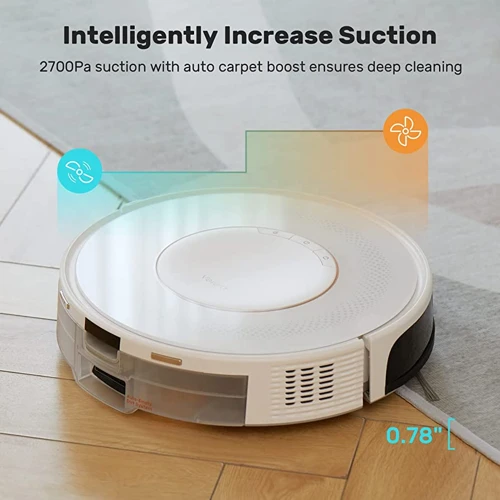
If you’re looking to get the most out of your robot vacuum cleaner, there are a few tips and tricks to keep in mind. By following these suggestions, you can ensure that your robot vacuum cleaner is maximizing cleaning coverage and thoroughly cleaning your floors. From clearing the floor of obstacles to setting up virtual barriers, these tips will help you get the most out of your robot vacuum cleaner and keep your home looking its best. So let’s dive in and take a closer look at how to maximize cleaning coverage with your robot vacuum cleaner.
Clear the floor of obstacles
When using a robot vacuum cleaner to maximize cleaning coverage, it’s important to ensure that the floor is cleared of any obstacles that could hinder its movement. This will allow the robot vacuum cleaner to clean the entirety of the intended space, ensuring that every inch of the floor is covered.
To make things easier, let’s break down the types of obstacles that can be found on the floor and ways to clear them away:
| Type of Obstacle | How to Clear |
|---|---|
| Furniture | Move any chairs, tables, or other furniture items off the floor to maximize the robot vacuum cleaner’s cleaning coverage. If it’s not possible to move larger furniture, use virtual walls or barriers to block off the areas around them, so that the robot cleaner knows to avoid those spots while cleaning. |
| Toys and other small objects | Clear away any toys, shoes, or other small objects, as these can get caught in the robot cleaner’s brushes and stop it from cleaning properly. If you have children, make sure they understand to tidy up their play area so that the robot cleaner can easily clean the space. |
| Cords or wires | Ensure that any cords, wires or cables are safely tucked away or lifted off the ground. These can present a tripping hazard, as well as a hazard for the robot vacuum cleaner’s brushes. Organize cords and cables, using cord clips or cable ties, to keep them out of the way and to help the robot cleaner navigate around the area without any obstructions. |
| Rugs or mats | Secure any rugs or mats snugly to the floor. These can become loose or wrinkled, obstructing the robot cleaner’s movement or skewing its mapping sensors. You can also use virtual walls or barriers to setup no-cleaning zones on rugs or mats, so that the robot cleaner avoids cleaning the areas around them. |
By taking these steps to clear the floor of obstacles, you can ensure that the robot vacuum cleaner can maximize its cleaning coverage, leading to better air quality and comfort in your home.
Close doors of uncleaned rooms
When using a robot vacuum cleaner, it’s important to maximize cleaning coverage, which means ensuring that all areas of your home are properly cleaned. One way to do this is by closing the doors of uncleaned rooms to prevent the robot vacuum cleaner from wasting time cleaning an area that doesn’t need to be cleaned.
By closing the doors, you can ensure that the robot vacuum cleaner focuses on cleaning the areas that need it the most, rather than accidentally wandering into other rooms that are already clean. This can save time and energy for both you and the robot vacuum cleaner, allowing it to clean your home more efficiently.
To further optimize this strategy, you can create a cleaning schedule that focuses on particular areas of your home on specific days. For example, if you have a guest room that is rarely used, you can close the door and only clean it once a month.
However, it’s important to note that closing doors can also create barriers that prevent the robot vacuum cleaner from accessing certain areas that need to be cleaned. To prevent this from happening, consider using virtual barriers (if your robot vacuum cleaner supports it) to create no-go zones for your robot vacuum cleaner.
Closing doors of uncleaned rooms is a simple and effective way to maximize cleaning coverage with a robot vacuum cleaner. By doing so, you can ensure that your robot vacuum cleaner focuses on cleaning the areas that need it the most, and avoid wasting time and energy on areas that are already clean.
| Pros | Cons |
|---|---|
| Optimizes cleaning time and energy | Can create barriers that prevent access to certain areas |
| Allows for a more efficient cleaning schedule | May not be effective without virtual barriers |
| Prevents wasting time cleaning areas that don’t need it |
Set up virtual barriers
One of the ways to maximize cleaning coverage with robot vacuum cleaners is by setting up virtual barriers. Virtual barriers help the robot vacuum cleaners to navigate around and avoid areas that you don’t want them to enter. There are a few ways to set up virtual barriers depending on the robot vacuum cleaner model.
1. Using magnetic strips: Some robot vacuum cleaners come with magnetic strips that act as virtual barriers. You can easily cut the strips into the desired size and shape, and place them along the areas that you don’t want the vacuum cleaner to enter. The vacuum cleaner will detect the magnetic field and avoid the area.
2. Using an app: Some high-end robot vacuum cleaners come with apps that allow you to map out your home and set up virtual barriers using your smartphone. You can draw lines or select areas that you don’t want the vacuum cleaner to enter. The robot will then use this information to navigate around your home while avoiding the restricted areas.
3. Using physical barriers: If you don’t have a robot vacuum cleaner that supports virtual barriers, you can use physical barriers to achieve the same effect. For example, if you want to restrict access to a room, you can simply close the door.
Setting up virtual barriers can help you avoid obstacles such as pet feeding areas, fragile decor, and any other areas that you don’t want the robot vacuum cleaner to clean. This will help the vacuum cleaner to focus on the areas that you want it to clean, which in turn will maximize its cleaning coverage.
Run the robot vacuum cleaner regularly
Regular use of your robot vacuum cleaner is key to maintaining a clean home. By running your robot vacuum cleaner regularly, you can help ensure that dirt, dust, and allergens are picked up before they have a chance to accumulate. Here are a few tips to help you make the most of your robot vacuum cleaner:
- Establish a cleaning schedule: Set a schedule for your robot vacuum cleaner to run on a regular basis, such as once a day or every other day. By scheduling regular cleanings, you can help ensure that your floors are always clean and free of debris.
- Clear the floor before cleaning: Before running your robot vacuum cleaner, make sure to clear the floor of any obstacles that might get in its way. Move chairs, toys, and other items out of the robot vacuum cleaner’s path to ensure that it can clean your floors as thoroughly as possible.
- Recharge your robot vacuum cleaner: Most robot vacuum cleaners will automatically return to their charging stations when they need to recharge. However, if you notice that your robot vacuum cleaner is running out of battery more quickly than usual, you may want to consider replacing the battery.
- Clean the dustbin regularly: Your robot vacuum cleaner’s dustbin should be emptied regularly to ensure that it can continue to pick up dirt and debris effectively. Depending on how frequently you use your robot vacuum cleaner, you may need to empty the dustbin daily or every other day.
- Replace filters as needed: Most robot vacuum cleaners come with a filter that should be replaced periodically to ensure that the vacuum is working efficiently. Check the manufacturer’s instructions to determine how often the filter should be replaced.
By following these tips, you can help ensure that your robot vacuum cleaner is running efficiently and effectively, and that your home stays clean and healthy.
Other ways to keep your home clean
Maintaining a clean and tidy home goes beyond using just a robot vacuum cleaner. While these smart home devices are a great way to maximize cleaning coverage, there are other tasks that need attention to ensure your home stays sanitary and presentable. Implementing a few simple practices can go a long way in keeping your living spaces clean and healthy. Here are some additional tips and tricks to keep your home spotless.
Spot cleaning with a handheld vacuum cleaner
When it comes to maximizing cleaning coverage in your home, a robot vacuum cleaner is a great way to keep your floors clean on a daily basis. However, there may be times when a particularly dirty spot needs some extra attention. That’s where a handheld vacuum cleaner comes in handy.
Spot cleaning with a handheld vacuum cleaner is a quick and effective way to remove debris and dust from specific areas. Here are some tips for using your handheld vacuum cleaner to get the best results:
- Choose the right attachment: Most handheld vacuum cleaners come with a few different attachments for different types of cleaning. Use the crevice tool for tight spaces or the upholstery tool for couches and chairs.
- Target the dirty area: Turn on your handheld vacuum cleaner, and use the appropriate attachment to target the area you want to clean. Move the attachment back and forth over the area, applying gentle pressure to pick up debris and dust.
- Empty the dustbin: After you finish spot cleaning, don’t forget to empty the dustbin in your handheld vacuum cleaner. This will keep the vacuum running smoothly and prevent clogs.
By using your handheld vacuum cleaner to spot clean areas in your home, you can help keep your floors and furniture looking clean and well-maintained.
Cleaning high-traffic areas regularly
It’s important to clean high-traffic areas regularly to maintain a clean and healthy living environment. High-traffic areas refer to spaces in your home that receive a lot of foot traffic such as the living room, kitchen, and hallway. Due to the high amount of activity, these areas can gather dust and dirt quickly, leading to poor indoor air quality, which can cause health problems. By cleaning these areas regularly, you can ensure that your home stays clean and healthy.
Here are some tips for cleaning high-traffic areas:
- Vacuum frequently: Use a handheld vacuum cleaner or attach the crevice tool to your robot vacuum cleaner to clean baseboards, corners, and edges of high-traffic areas regularly.
- Use doormats: Place doormats at the entrance of your home to trap dust, dirt, and debris. This will keep the high-traffic areas cleaner and reduce the need for frequent cleaning.
- Clean spills immediately: Accidents can happen, and spills can occur in high-traffic areas. Make sure to clean them immediately, so they don’t cause permanent stains or damage.
- Rotate your furniture: Moving your furniture around can help prevent uneven wear and tear on your carpet or flooring. It also allows you to clean those hard-to-reach areas that are typically covered by furniture.
- Use mats and rugs: Placing mats or rugs in high-traffic areas can help prevent dirt, dust, and debris from building up. Clean them regularly to avoid trapping dirt and odor in them.
By taking care of your high-traffic areas, you can ensure that your home remains clean and healthy. Incorporating these tips into your cleaning routine can save you time and energy while keeping your home looking and feeling fresh.
Wiping down surfaces with disinfectant
Keeping your home clean is not only about removing visible dirt and dust, but it also involves ensuring that surfaces are disinfected. Wiping down surfaces with disinfectant is an essential cleaning task that should be performed regularly to eliminate germs and bacteria that can cause illnesses.
Disinfecting surfaces using cleaners that are designed to kill germs can help prevent the spread of diseases such as colds and flu. According to the Centers for Disease Control and Prevention (CDC), disinfectants that contain at least 70% alcohol or EPA registered household disinfectants are effective against COVID-19.
When it comes to wiping down surfaces, it’s important to use the right type of cleaner for the job. Different surfaces may require different types of disinfectant cleaners, and you should always read the instructions on the cleaning product before use.
Here are some common household surfaces that should be wiped down regularly with disinfectant:
| Surface | Disinfectant Cleaner |
|---|---|
| Kitchen Countertops | Antibacterial cleaner or bleach solution |
| Bathroom surfaces (sink, bathtub, shower) | Bleach solution or disinfectant cleaner |
| Doorknobs and handles | Disinfectant wipes or solution |
| Electronics (cell phones, laptops, tablets) | Disinfectant wipes or 70% alcohol solution |
In addition to using disinfectant cleaners, it’s also important to clean surfaces regularly. Dirt and grime can build up on surfaces over time, making it harder for disinfectants to work effectively. Regular cleaning can help remove any visible debris or dirt, making it easier for the disinfectant to do its job.
Wiping down surfaces with disinfectant is just one way to keep your home clean and healthy. By following other cleaning tips, such as using a robot vacuum cleaner and organizing cluttered spaces, you can ensure that your home is a clean and comfortable place to live.
Organizing cluttered spaces
A cluttered and messy home can significantly reduce the effectiveness of a robot vacuum cleaner. To maximize cleaning coverage with these devices, it’s important to organize and declutter the spaces in your home. Here are some tips for keeping your home organized:
- Invest in storage solutions: Utilize storage baskets, organizers and shelving units to keep your belongings organized neatly. Make sure to assign a specific spot for each item in your home to keep things organized and easily accessible.
- Create designated zones: Divide your home into zones based on their function. This will help you keep track of different areas and organize them effectively. For example, you can create a reading nook, a play area, a work station, or a relaxation spot.
- Get rid of what you don’t need: One person’s trash is another person’s treasure. Try to declutter your home by going through each room and getting rid of items you don’t need. Donate, sell or recycle things that you haven’t used in the past six months.
- Store seasonal items away: Seasonal items like winter jackets or holiday decorations can take up a lot of space. Store these away in boxes when not in use to avoid cluttering your home.
- Use vertical space: If you’re running out of space to store items, try to use vertical walls to store items like kitchen utensils, jewelry and other small items. This can free up valuable floor space.
By organizing cluttered spaces in your home, you can maximize the efficiency of your robot vacuum cleaner and create a more pleasant living environment for yourself. Remember to keep things organized and tidy to make the most out of your robot vacuum cleaner’s cleaning capabilities.
Conclusion
In conclusion, robot vacuum cleaners have revolutionized the way we clean our homes. With their advanced mapping technologies, obstacle detection sensors, and smart navigation systems, they can effectively maximize cleaning coverage and improve the indoor air quality of our homes. By removing allergens and dust effectively, they create a healthier environment for us to live in.
To maximize cleaning coverage when using robot vacuum cleaners, it is essential to clear the floors of any obstacles, close the doors of uncleaned rooms, set up virtual barriers, and run the robot vacuum cleaner regularly. These tips will ensure that the robot vacuum cleaner covers all areas of the home, leaving it spotless and free of dust and allergens.
In addition to using a robot vacuum cleaner, other ways to keep your home clean include spot cleaning with a handheld vacuum cleaner, cleaning high-traffic areas regularly, wiping down surfaces with disinfectant, and organizing cluttered spaces. These habits will go a long way in keeping your home neat and tidy.
Investing in a robot vacuum cleaner is an excellent way to maximize cleaning coverage without spending a lot of time and effort. While there is no substitute for regular cleaning and maintenance, a robot vacuum cleaner can make the process easier, less time-consuming, and more effective. So, consider purchasing a robot vacuum cleaner today and watch as it transforms the way you keep your home clean.
Frequently Asked Questions
1. How often should I use my robot vacuum cleaner?
It is recommended to run your robot vacuum cleaner at least once a day in high-traffic areas and every other day in less frequented areas.
2. Can robot vacuum cleaners clean carpets?
Yes, many robot vacuum cleaners are equipped with brushes and suction power to effectively clean carpets and rugs.
3. How do robot vacuum cleaners navigate around furniture?
Robot vacuum cleaners use advanced mapping technologies and sensors to detect obstacles and plan a route around furniture.
4. Can I schedule my robot vacuum cleaner to run automatically?
Yes, most robot vacuum cleaners come with scheduling options allowing you to set a time and frequency for it to run.
5. Can robot vacuum cleaners clean corners effectively?
Many robot vacuum cleaners are equipped with side brushes and advanced sensors to effectively clean corners and edges.
6. How does a robot vacuum cleaner recharge itself?
Robot vacuum cleaners are designed to return to their docking station when their battery is low, and recharge automatically.
7. Can a robot vacuum cleaner replace traditional cleaning methods?
While robot vacuum cleaners can effectively clean floors, traditional cleaning methods like wiping down surfaces and cleaning high-touch areas are still important for maintaining overall cleanliness.
8. Can I control my robot vacuum cleaner with a smartphone app?
Yes, many robot vacuum cleaners come with smartphone apps allowing you to control and monitor cleaning activity remotely.
9. Do robot vacuum cleaners make a lot of noise?
Most robot vacuum cleaners are designed to be quiet, but noise levels can vary between models.
10. How do I maintain my robot vacuum cleaner?
Regularly cleaning the brushes and filters, emptying the dustbin, and ensuring sensors are free of debris can help maintain the performance of your robot vacuum cleaner.

